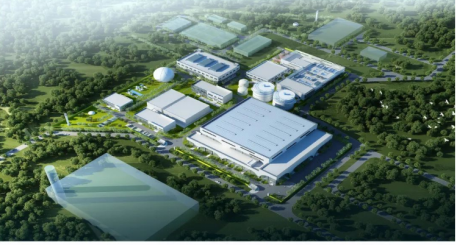NEWS
News
Some Common Sense of Dry Anaerobic Fermentation
发布时间:2022-09-29 10:56
dry typeAnaerobic fermentation is a complex biochemical reaction process in which a variety of microorganisms work together to degrade organic matter and produce methane and carbon dioxide under anaerobic conditions. Compared with other treatment methods, anaerobic fermentation has obvious advantages. Anaerobic fermentation has the characteristics of high treatment efficiency, strong impact resistance, low energy consumption and biogas production, which can meet the urgent needs of energy saving, emission reduction and environmental protection.

Compared with foreign countries, our countrydry typeAnaerobic fermentation technology still has a certain gap: mainly process research, equipment research is relatively backward; wet anaerobic fermentation is dominant, dry anaerobic fermentation lags behind. The automation level of system operation management is not high, and the technology and equipment matching with anaerobic fermentation are not mature.
Low temperature, medium temperature, high temperaturedry typeThe suitable temperature for anaerobic fermentation has two zones, and the middle temperature zone isBetween 30-35, the high temperature zone is between 50-55. Both anaerobic biogas production and organic matter removal were high in both temperature zones. Low temperature willsuppressionThe activity of microorganisms reduces the biochemical reaction rate and the removal rate of pollutants, and reduces the generation of methane. Therefore, it is necessary to extend the reaction residence time and increase the reactor volume. Therefore, in specific projects, high temperature anaerobic fermentation is often used. High temperature anaerobic fermentation has certain advantages over mesophilic anaerobic fermentation.
According to the materialThe content of TS can be divided into dry anaerobic fermentation and wet anaerobic fermentation. The wet anaerobic fermentation process means that the TS of the feed is below 15%. Under the condition of solid content, the material generally presents a relatively sufficient flow state, so it has relatively good mass and heat transfer performance and transportation performance. The wet fermentation process needs to add fresh water to the slurry, the subsequent biogas slurry treatment is difficult, easy to cause secondary pollution. Dry anaerobic fermentation refers to anaerobic fermentation in which the content of TS in feed is higher than 15%. Under the condition of solid content, the material is generally in the state of accumulation and no flow. Dry anaerobic fermentation has the advantages of low transportation cost, small reactor volume, high volumetric gas production rate, less waste liquid after digestion, and simple subsequent treatment of biogas residue. Organic solid waste has become a resource, reduction and stabilizationvery goodTechnology. Dry anaerobic fermentation technology has obvious advantages, but there are still the following technical difficulties:
(1) "acid accumulation" and "ammonia nitrogen suppression" are easy to occur during dry anaerobic fermentation ";
(2) Pipeline transportation is easy to be blocked, it is difficult to distribute evenly in the reactor, and it is difficult to feed continuously and synchronously;
(3) It is difficult to mix materials in the reactor, the inoculation effect is poor, and the fermentation cycle is long;
(4)dry typeThe start-up conditions in the anaerobic reactor are harsh, and there is a high degree of instability in the operation.
The above is about dryAnaerobicSome of the knowledge points, I hope you can seriously learn to understand the relevant knowledge, choose the right products and equipment for their own needs.
















